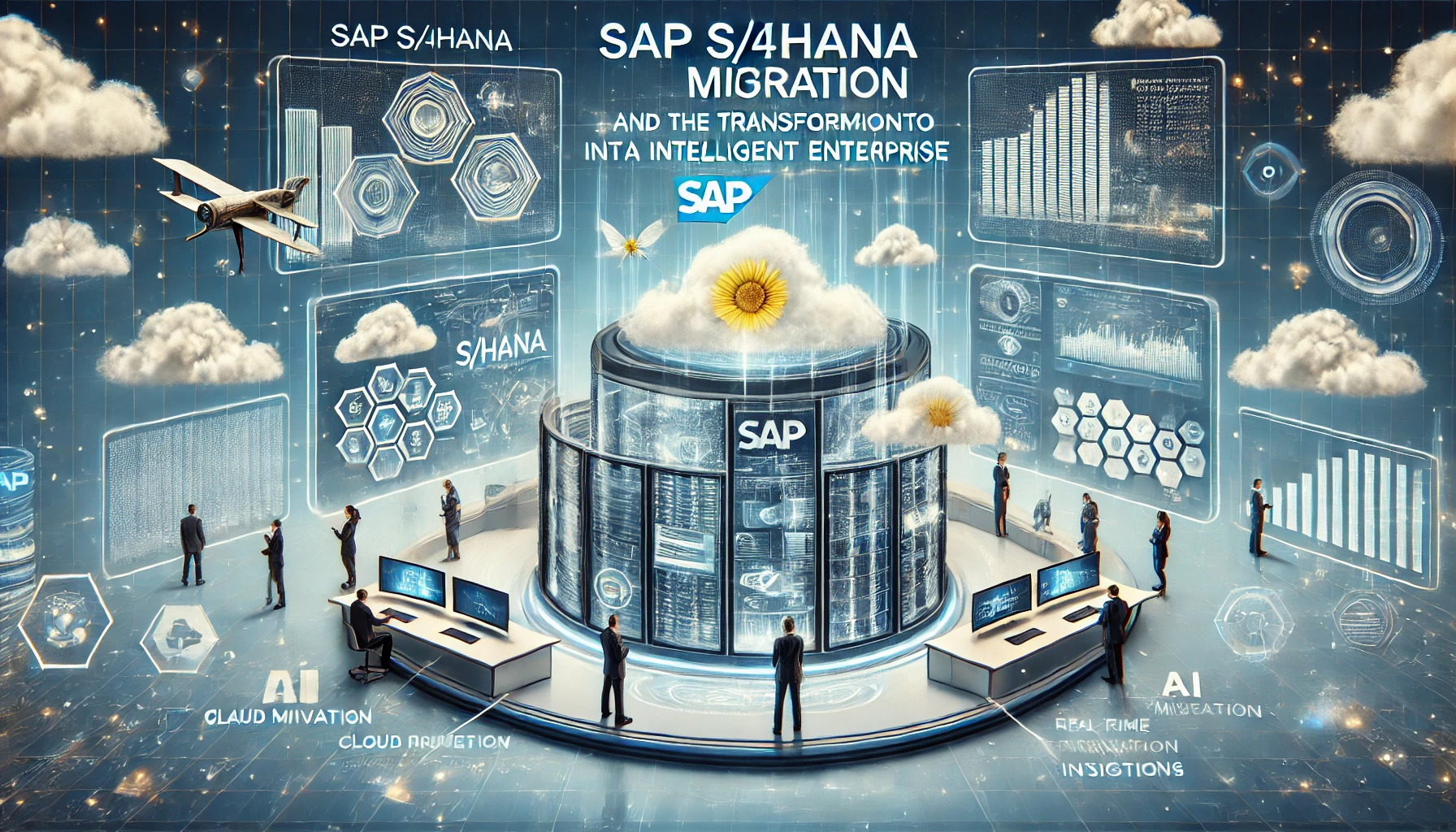
In today's fast-evolving business landscape, agility and data-driven decision-making are no longer optional—they're survival skills. For decades, SAP ERP Central Component (ECC) has been the backbone of enterprise operations, helping organizations manage finance, logistics, HR, and more. But as digital transformation accelerates, businesses are turning to SAP S/4HANA, the next-generation ERP suite designed for the AI-driven, cloud-first era.
Why SAP S/4HANA? The End of an Era for ECC
SAP ECC has served businesses well, but its limitations in handling modern demands—real-time analytics, massive data volumes, and seamless integration—are becoming glaring. SAP S/4HANA, built on the in-memory SAP HANA database, is not just an upgrade; it's a complete reinvention. Here's why it's a game-changer:
1. Real-Time Insights
Process and analyze data in real time, enabling faster decisions. For example, instantly track global inventory levels or predict cash flow trends.
2. Simplified Data Model
Eliminate redundant tables and legacy complexity. S/4HANA's streamlined architecture reduces data footprint by up to 70%.
3. Enhanced User Experience
SAP Fiori's intuitive interface replaces clunky transactions, offering role-based, consumer-grade UX across devices.
4. AI and Machine Learning Integration
Automate invoice matching, predict maintenance needs, or optimize supply chains with embedded AI capabilities.
5. Cloud Flexibility
Choose hybrid, public, or private cloud deployments to align with your IT strategy.
The Business Case for Migration
By 2027, SAP will end mainstream maintenance for ECC, making migration inevitable. But forward-thinking companies aren't waiting—they're leveraging S/4HANA to:
- Cut Operational Costs: Reduce hardware and IT overhead with cloud scalability.
- Boost Productivity: Empower employees with self-service analytics and automated workflows.
- Innovate Faster: Integrate IoT, blockchain, and advanced analytics to stay ahead of competitors.
Real-World Impact
- A global manufacturer reduced month-end financial closing from 10 days to 48 hours post-migration.
- A retail giant achieved 99% inventory accuracy using S/4HANA's demand-driven MRP.
Key Challenges in Migrating to SAP S/4HANA
While the benefits are clear, the path to S/4HANA is fraught with hurdles:
1. Data Complexity
Legacy data often requires cleansing, deduplication, and restructuring to fit S/4HANA's simplified model.
2. Custom Code Compatibility
Custom ABAP programs from ECC may need rewriting or replacement.
3. Change Management
Employees accustomed to ECC's transactional workflows must adapt to Fiori's role-based design.
4. Downtime Risks
Minimizing business disruption during cutover requires meticulous planning.
A Step-by-Step Roadmap to Successful Migration
1. Assess and Plan
- Conduct a Fit-to-Standard Analysis: Identify gaps between current ECC processes and S/4HANA's best practices.
- Choose Your Path: Opt for a greenfield implementation (new setup), brownfield (system conversion), or hybrid approach.
2. Prepare Your Data
- Cleanse historical data and migrate only what's essential.
- Use tools like SAP Data Services or Syniti for seamless ECC-to-S/4HANA data transfer.
3. Redesign Processes
- Leverage S/4HANA's embedded capabilities (e.g., Material Requirements Planning Live) to eliminate redundant steps.
- Retire outdated customizations in favor of SAP's standard functionalities.
4. Test Rigorously
- Validate integrations, user roles, and performance under real-world scenarios.
- Pilot with a single department (e.g., finance) before full-scale rollout.
5. Train and Transition
- Use SAP's Learning Hub to upskill teams on Fiori apps and new workflows.
- Appoint "super users" to drive adoption and address concerns.
6. Go Live and Optimize
- Execute a phased cutover to minimize disruption.
- Continuously refine processes using SAP's Activate Methodology.
The Role of Partners in Your Migration Journey
SAP migrations are rarely DIY endeavors. Partnering with experienced consultants or SAP-certified providers can:
- Accelerate timelines with prebuilt templates and tools.
- Mitigate risks through proven migration frameworks.
- Provide post-go-live support for optimization.
The Future of SAP: Beyond S/4HANA
SAP's vision extends beyond ERP. With innovations like RISE with SAP (a subscription model for end-to-end transformation) and Industry Cloud (vertical-specific solutions), the focus is on creating intelligent, sustainable enterprises.
Conclusion: Embrace the S/4HANA Revolution
Migrating to SAP S/4HANA isn't just about keeping up with technology—it's about future-proofing your business. While the journey demands careful planning and investment, the payoff in agility, efficiency, and innovation is unparalleled.
Transform your business with SAP S/4HANA—where legacy meets innovation.